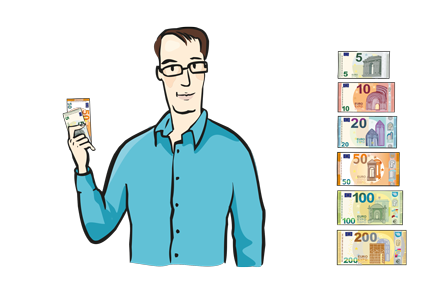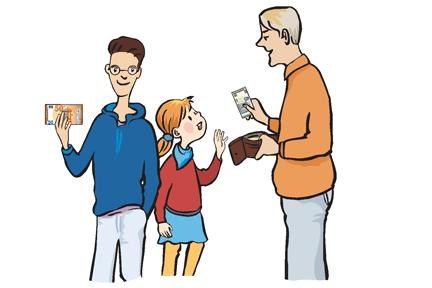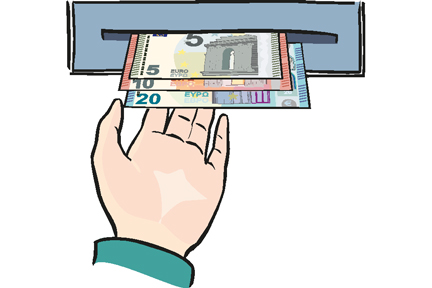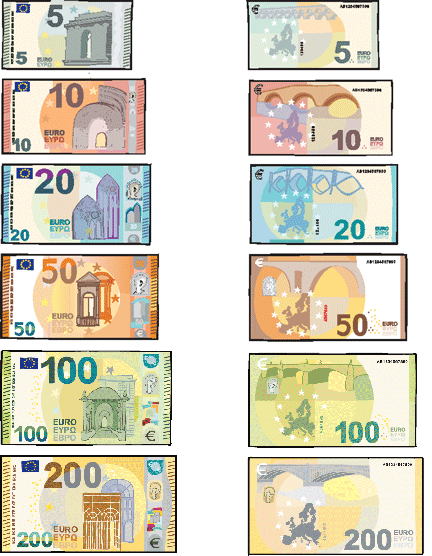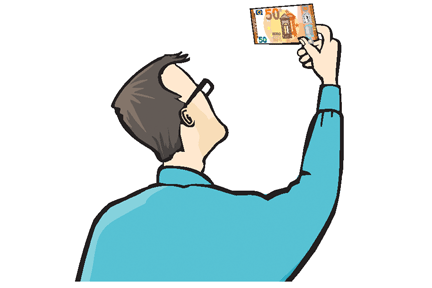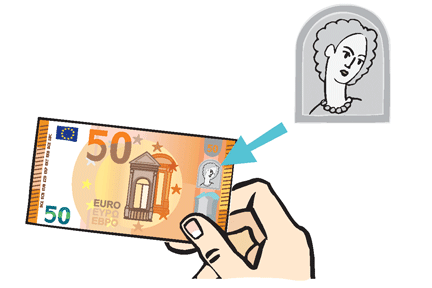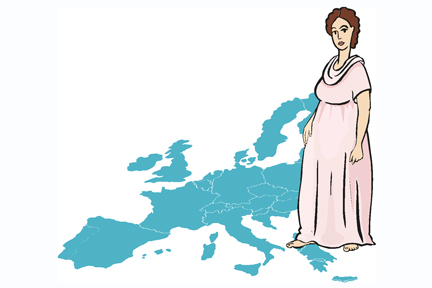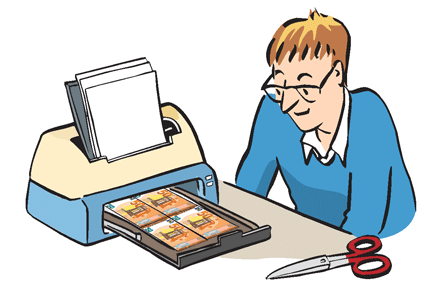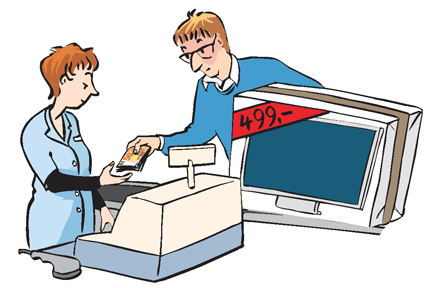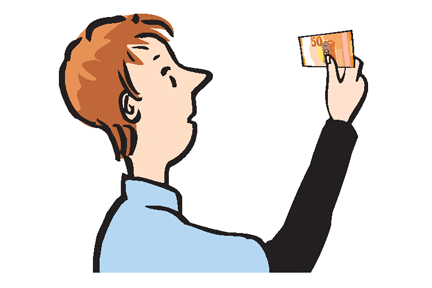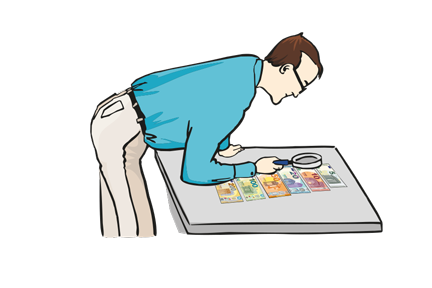The euro banknotes Information about Bundes-Bank. In easy-to-read format.
You often hold euro banknotes in your hand.
At the ticket counter at the cinema, for instance.
You pay with euro banknotes at the cash desk.
Or when you give your children their pocket money.
You get banknotes from cash machines (ATMs).
Here you can see all of the different euro banknotes.

This is what a €50 banknote looks like.
The €50 banknote contains a special picture.
The picture appears twice on the note. But it is hidden.
You can see the picture by holding the €50 banknote against the light.
You can see the picture on the left-hand side of the note.
You can also see the picture on the right-hand side of the note.
The picture shows Princess Europa.
Princess Europa is a character in an old story.
Our continent has a similar name: "Europe".
It is named after Princess Europa.
Why is this picture on the €50 banknote?
There are two reasons:
Reason 1:
The euro banknotes share the same name as Princess Europa.
They are called Europa banknotes.
They are also known as the "Europa series".
Reason 2:
The picture of Europa makes the €50 banknote more secure.
This picture is also known as a "security feature".
How does the picture of the princess make the €50 note more secure?
Sometimes people try to make banknotes themselves.
These people copy the euro banknotes.
These people are known as money counterfeiters.
The copied banknotes do not show a picture of Princess Europa.
The copied notes are counterfeit money.
Money counterfeiters try to buy things using the counterfeit money.
The cashier holds the €50 note against the light.
The cashier does not see a picture of princess Europa on the note.
The cashier is sure that this note is a counterfeit.
The cashier calls the police.
The police arrest the counterfeiter.
The police destroy the counterfeit money.
Only genuine money is allowed. Genuine money can be used to buy things.
The picture of Princess Europa makes genuine money more secure.
That is why you should always take a closer look at every banknote.
Illustrations: © Reinhild Kassing
